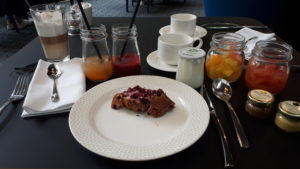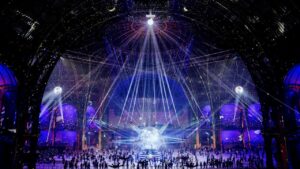Discover all the corners of the Bourgogne Franche-Comté region through a fun rally!
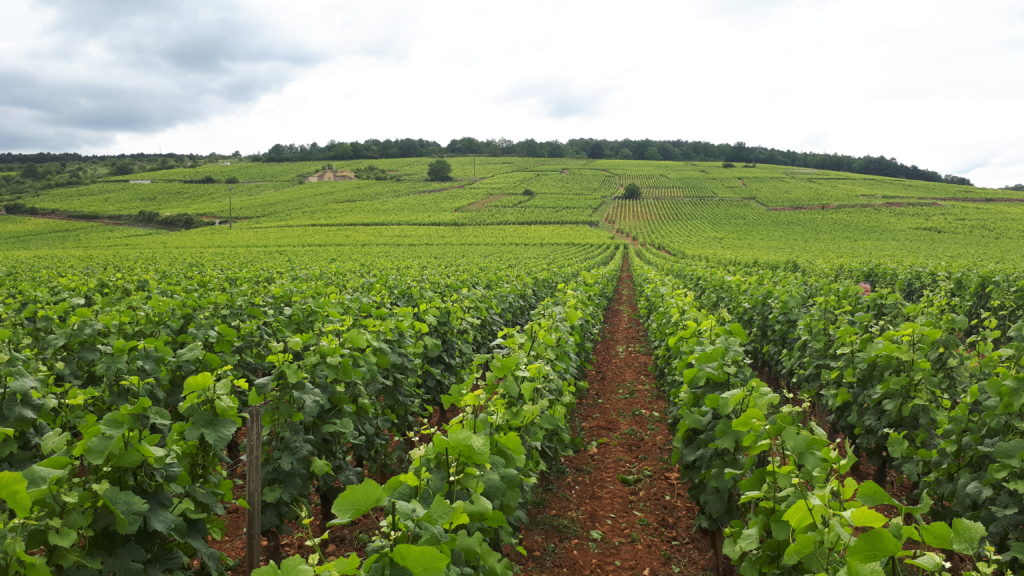
The newly created Bourgogne Franche-Comté French region offers a vast panorama of landscapes, which would satisfy the curiosity of all kinds of visitors’ profiles. Indeed, this extended territory had the chance to propose an exceptional natural, cultural and historical heritage, famous all over the world. We propose you to discover it through an itinerary of some hot spots to visit, and proving you that it’s possible to get a taste of many sides of this region in a few stages… By Alex Plato
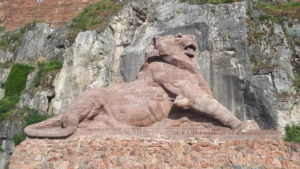
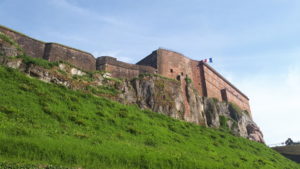
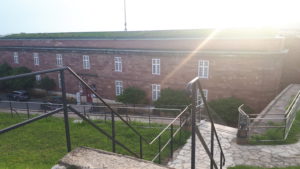
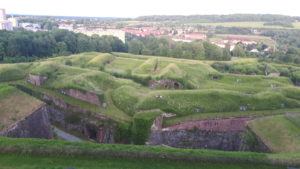
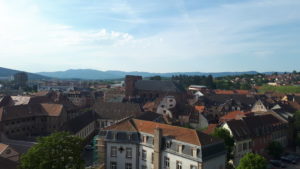
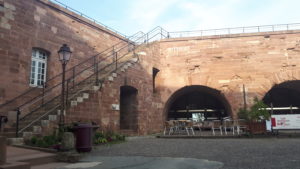
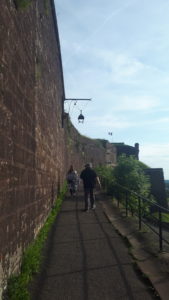
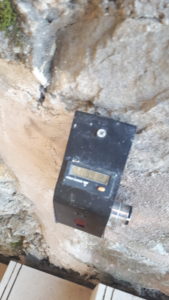 Located around the Pays de Montbéliard, starting from the smallest department of France, the Belfort Territory! Where you would admire from the top of the Citadel, the famous Lion of Belfort, an artwork of the French sculptor Auguste Bartholdi, built in tribute to the victims of the 1870 War, achieved in 5 years and finally issued in 1880 (photo credits: Alex Plato).
Located around the Pays de Montbéliard, starting from the smallest department of France, the Belfort Territory! Where you would admire from the top of the Citadel, the famous Lion of Belfort, an artwork of the French sculptor Auguste Bartholdi, built in tribute to the victims of the 1870 War, achieved in 5 years and finally issued in 1880 (photo credits: Alex Plato).
This Lion honors the stubborn resistance of 16,000 armed citizens, who, during the Franco-Prussian war of 1870-1871, defended this portion of the national soil after the surrender signed by the French government. From this monumental animal (11 metres high and 22 metres long), don’t miss the incredible panorama offered on the city and the valley of the Belfort Gap (Trouée de Belfort)!
There are plenty of this Lion replicas in Belfort including derivatives, present at many points of the city.
The first Lion arrived a couple of time before the Bartholdi’s official one, in front of the Épicerie du Lion, in order for the Belfort citizens to wait for the arrival of the “real one”! It was a very fine grocery store, inaugurated in 1825, which later became L’Estaminet brewery, including a listed facade (check the photo below).
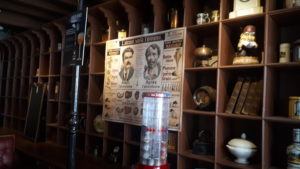
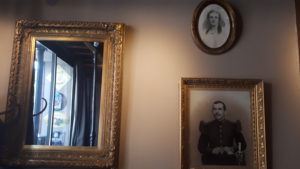
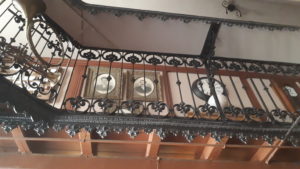
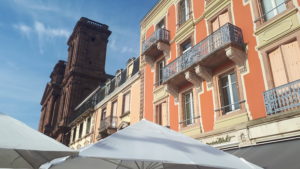
Indeed, if you have a look around in the city center, you would face more than a hundred lions spread throughout the city, especially on the facades of public buildings, such as 20 on the Halles market’s facade, built in one year and issued in 1905.
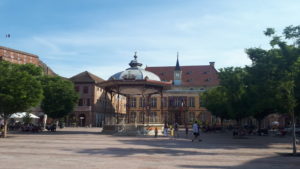 Those are the same Parisian architects who designed the kiosk located on the Place d’Armes (Belfort being for a long time a garrison city), facing the Hôtel de Ville (City Hall), being, at the basis, a mansion dating from 1724. That’s why you would find the same lions on the front. This kiosk is a place for musical rendez-vous, and especially busy during 4 days for free concerts during the weekend of Pentecost.
Those are the same Parisian architects who designed the kiosk located on the Place d’Armes (Belfort being for a long time a garrison city), facing the Hôtel de Ville (City Hall), being, at the basis, a mansion dating from 1724. That’s why you would find the same lions on the front. This kiosk is a place for musical rendez-vous, and especially busy during 4 days for free concerts during the weekend of Pentecost.
On this same square is located the Antique Flea Market, on the first Sunday of every month (from March to December). You shouldn’t miss it since it’s considered as the largest antique dealer market in eastern France.
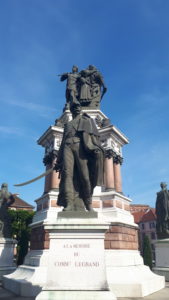
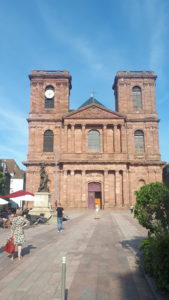 Not far from this dynamic urban agora, the Saint Christopher Church became a cathedral in 1979, while the initial construction works began in 1727. Inside this cathedral, there is a beautiful organ, also listed in the register of historical monuments.
Not far from this dynamic urban agora, the Saint Christopher Church became a cathedral in 1979, while the initial construction works began in 1727. Inside this cathedral, there is a beautiful organ, also listed in the register of historical monuments.
Fortunately and sometimes unfortunately, located on an European passage zone, despite a Vauban fortification, Belfort had experienced many sieges, namely mentioned on the Monument aux Trois Sièges (or Monument to the Three Liars), erected following the siege of 1814.
Moreover, it should be known that at the end of the siege of 1870 and following an agreement between Thiers and Bismarck, Belfort remained French.
This culture is represented in seven museums spread over six locations form, into the city, an interesting group. For instance, from the Citadel, an exploratory visit to the Great Gallery, summarizing the History of Belfort through an augmented reality trail, then the Museum of History, with its archeological, historical, military collections and domestic objects, incorporating an area dedicated to Bartholdi.
In downtown, the Museum of Fine Arts (Tower 41) contains collections of paintings, sculptures and decorative arts from the end of the Middle Ages up to the present day. The collection donated Maurice Jardot to the Museum of Modern Art holds the most prestigious works of artists from the first half of the 20th Century, collected by Maurice Jardot and gifted to the city of Belfort in 1997. Tower 46 proposes a fine space for temporary exhibition, organized around a central pentagonal pillar, in a carefully preserved and presented architectural setting. The parts of the Citadel opened to the public are the Panoramic Terrace, the Courtyard of Honor and the Bourgeois Tower.
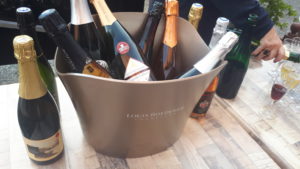
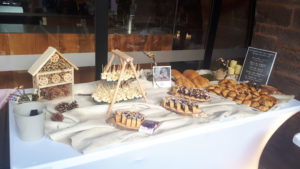

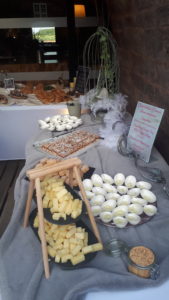 During our visit at the top of this Belfort Citadel, we were welcomed by the GPPR, which is an organism of promotion of the Bourgogne Franche-Comté region’s finest gastronomy elements. This real ambassador shares a selection of more than 200 products, among them 60 different cheese types and a selection of hundreds of wine (see the photo upon).
During our visit at the top of this Belfort Citadel, we were welcomed by the GPPR, which is an organism of promotion of the Bourgogne Franche-Comté region’s finest gastronomy elements. This real ambassador shares a selection of more than 200 products, among them 60 different cheese types and a selection of hundreds of wine (see the photo upon).
For example, you should taste the Anis de Flavigny (anise candy). Those exist, since 1591, straight from the village of Flavigny, faithful to the same recipe, each seed of anise 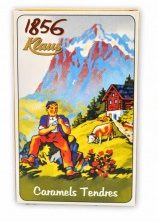 is patiently wrapped in thin layers of syrup, delicately flavored. Still manufactured in the heart of the old Benedictine abbey, the factory of those Anis de Flavigny is open to visitors, it could be the oldest brand in France and it’s also a small family business!
is patiently wrapped in thin layers of syrup, delicately flavored. Still manufactured in the heart of the old Benedictine abbey, the factory of those Anis de Flavigny is open to visitors, it could be the oldest brand in France and it’s also a small family business!
The three ingredients of the basic recipe are sugar, a seed of anise and a natural aroma of anise. Nowadays, you have to know that it needs 15 days to prepare this little candy, it also comes in a variety of 10 flavors, anise, violet, rose, mint, orange blossom, flower, liquorice, lemon, ginger, blackcurrant, tangerine and even ginger! (Photo credits: Anis de Flavigny)
Otherwise, you would have the choice to taste those Caramels Tendres (Tender Caramels, photo on the left), manufactured in Morteau by Klaus, with fresh milk and salted butter. The note of salt present in the butter enhances the delicate scent of caramel. All their caramels are made in traditional copper cookers. The caramel is then slowly cooled down from a temperature of 113 ° C to 25 ° C to be cut and packaged. They attach a lot of importance to the selection of their raw materials. Notably the quality of the fresh milk that comes from the area, close to the factory. The milk used, meets the specifications of 3 AOC: Comté, Mont d’Or and Morbier.
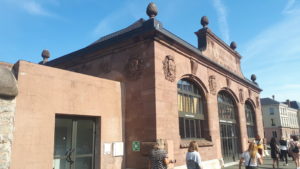
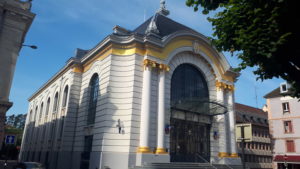
Originally from the nearby South-Alsatian city of Colmar, the sculptor Auguste Bartholdi finally managed to convince the Belfort mayor of that time to build this famous Lion, directly designed on the rock, composed of pink sandstone from the Vosges. Mainly inspired by Egypt, Auguste Bartholdi, also designer of the Statue of Liberty in New-York City and a small replica in Paris, opted for a Lion animal, of 22 meters long. This choice was made thanks to the reference to the robustness of this feline, in the form of a tribute to the 103-day siege which weakened the city of Belfort during the sad 1870 War.
This sculpture was so popular in the eyes of the Parisian visitors, that many of them made the trip to Colmar to admire it. Subsequently, the city of Paris ordered a replica to decorate the Denfert-Rochereau place.
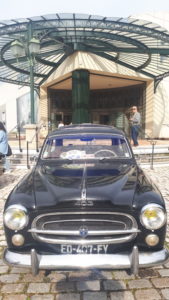
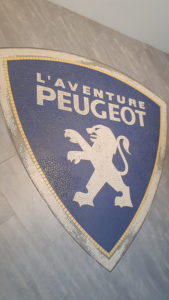
L’Aventure Peugeot Museum pays tribute to this legendary Peugeot automobile factory. Still around the Pays de Montbéliard, this edifice was created in July 1988 and it emanates from an association of the Lion brand enthusiasts who have embarked on an illumination of an inventory of this famous automobile’s History.
Starting from the first manufactured kitchen tools, such as pepper mills, the Peugeot family extended its range on motorized plows and the first cars that have made the brand famous.
This Peugeot Museum, located in Sochaux, is voluntarily rooted in the historical bastion of the first Peugeot productions from 1810 to the present day. Nowadays, it is one of the most important cultural sites in eastern France, promoted by the Bourgogne Franche-Comté tourism office, and it’s an important witness of two centuries of this incredible industrial saga of the Lion brand.
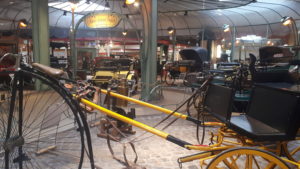 This museum was founded beyond an initiative of the association, also named L’Aventure Peugeot, founded in 1982 in Sochaux, in the Doubs french department. Its president, Pierre Peugeot, set his main missions at that time to identify and bring together the different types of manufactured products since 1810 under the Peugeot brand, also to take part in events concerning old vehicles, such as organizing meetings of vintage cars, in particular. The museum first opened its doors to the public in July 1988. It naturally displays a huge collection of automobiles, cycles, tools and household goods of the brand organized around four successive periods, from the beginning of the 19th century to the end of the first half of the 20th century.
This museum was founded beyond an initiative of the association, also named L’Aventure Peugeot, founded in 1982 in Sochaux, in the Doubs french department. Its president, Pierre Peugeot, set his main missions at that time to identify and bring together the different types of manufactured products since 1810 under the Peugeot brand, also to take part in events concerning old vehicles, such as organizing meetings of vintage cars, in particular. The museum first opened its doors to the public in July 1988. It naturally displays a huge collection of automobiles, cycles, tools and household goods of the brand organized around four successive periods, from the beginning of the 19th century to the end of the first half of the 20th century.
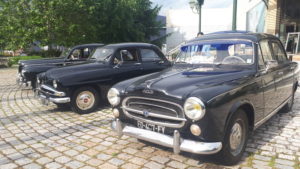 In 2000, a first extension was created, allowing the creation of a space dedicated to cars, from the years 1950 – 1970, and a space for “Cycles and Motorcycles”. Since May 2010, the museum has an additional exhibition area of 1500m² which proposes to present the Peugeot range from the years 1980-1990, commercial vehicles from 1894 to 1990, a new space for racing cars and a modern space for the organization of temporary exhibitions or receptions in the heart of the museum. You would find a brasserie and maybe have the possibility to try one of the old cars collection. Even if the brand is associated nowadays with other car companies: Citroën and DongFeng.
In 2000, a first extension was created, allowing the creation of a space dedicated to cars, from the years 1950 – 1970, and a space for “Cycles and Motorcycles”. Since May 2010, the museum has an additional exhibition area of 1500m² which proposes to present the Peugeot range from the years 1980-1990, commercial vehicles from 1894 to 1990, a new space for racing cars and a modern space for the organization of temporary exhibitions or receptions in the heart of the museum. You would find a brasserie and maybe have the possibility to try one of the old cars collection. Even if the brand is associated nowadays with other car companies: Citroën and DongFeng.
A salty region… From the Middle Ages to the 60s, salt was relentlessly extracted by heating brines in stoves, of which there are now more copies than those of Salins-Les-Bains. Today, salt has left us a rich heritage: underground galleries with ancient arches of Salins-les-Bains, through the Saline Royale (Royal Saltworks) of Arc-et-Senans with a fascinating architecture, signed by the visionary architect Claude-Nicolas Ledoux.
In Salins-Les-Bains, salt is everywhere and it comes from the History of the region when the sea covered it, 210 million years ago, the climate of Jura then resembled to the Bahamas.


 The caves of the Grande Saline contain many secrets and riches, and since the 800. In fact, by the time, salt was a bargaining money, the salarium, from which is drawn the word salary, properly indicates the value of this commodity, which would hinder a third from the financial incomes coming to the vaults of the Duchy of Burgundy. Indeed, in the 17th century, a ton of salt was worth the equivalent of 100 euros.
The caves of the Grande Saline contain many secrets and riches, and since the 800. In fact, by the time, salt was a bargaining money, the salarium, from which is drawn the word salary, properly indicates the value of this commodity, which would hinder a third from the financial incomes coming to the vaults of the Duchy of Burgundy. Indeed, in the 17th century, a ton of salt was worth the equivalent of 100 euros.
So much of value that it attracted all the greed including thieves, that is why the galleries were protected by ogival shaped walls for the tunnel, a consistent length of 165 meters.
The stakes were high since a 245-meter borehole was created in 1846 to raise salt water. The factory really worked full-time!
The wheel (upon pictured) is the engine that drove the mechanism.
Upon, you would see the building of the Grande Saline‘s director, also called the Grand Puits House, that also was the former Old Casino.
 This salt factory was active during 1200 years, until 1962. From 1780 to 1895, its saline water was transported over a distance of 21 km by brine pipes until the Saline Royale (Royal Saltworks) of Arc-et-Senans, built near a large forest to ensure fuel. The Grande Saline also houses a 13th century underground tunnel with a 19th century hydraulic pump still in operation. The Stoves room lets imagine the hard work of the workers to harvest the “White Gold”.
This salt factory was active during 1200 years, until 1962. From 1780 to 1895, its saline water was transported over a distance of 21 km by brine pipes until the Saline Royale (Royal Saltworks) of Arc-et-Senans, built near a large forest to ensure fuel. The Grande Saline also houses a 13th century underground tunnel with a 19th century hydraulic pump still in operation. The Stoves room lets imagine the hard work of the workers to harvest the “White Gold”.
It is surprisingly, one of the most salty waters in the world. In fact, the brine of the Grande Saline is even saltier than the Dead Sea, if you taste it (just a drop will suffice), you would confirm that it’s composed of 330g per liter, instead of around 200g per liter in this Israel’s interior Sea.
The Grande Saline, celebrates in 2019, its 10 years birthday in the UNESCO World Heritage‘s registration, is open every day, except December 25th. An occasion to live a great experience underground, while tasting a tear of high salty water and being guided by a passionated team.


 The Spa treatment proposed by Therma Salina is really an experience, starring water basins made of more salt than the Dead Sea, the Spa lovers would float above the water and for sure benefit from its assets (photo credits: IG Grande Saline).
The Spa treatment proposed by Therma Salina is really an experience, starring water basins made of more salt than the Dead Sea, the Spa lovers would float above the water and for sure benefit from its assets (photo credits: IG Grande Saline).
Their thermal waters, very rich in sodium chloride and trace elements, have antalgic and remineralizing effects. They promote joint flexibility because they allow effective work in water, almost weightlessness, resulting in an intense relaxation of joint and muscle tension.
The waters from the Muyre Source, less salty than those used for the care, feed the pools of the relaxation area. Therapeutic and preventive benefits first, through the physical action of mineral salts that improve osmosis joint flexibility and biochemical action of potassium, magnesium and calcium on arthrosis, trauma sequelae, and joint pain in general.


For a better comfort, you could stay in the contemporary Grand Hotel, proposing a gourmet restaurant with local specialties. This modern boutique hotel also features an indoor pool, fitness and even some spacious rooms with balneotherapy baths.
 Grand Hôtel des Bains – 2 Place des Alliés et de la Résistance, 39110 Salins-les-Bains – 00 33 (0)3 84 37 90 50
Grand Hôtel des Bains – 2 Place des Alliés et de la Résistance, 39110 Salins-les-Bains – 00 33 (0)3 84 37 90 50
Why not later pursuing your evening in the nearby Casino Le Sensso, proposing everything you need to enjoy a gambling moment with your friends (photo credits: Le Sensso). Don’t forget to bring your ID to let you inside!
Adress :
6 rue de la république
39110 Salins les Bains
Tel. : 00 33 (0)3 84 73 05 02
A couple of miles further and you arrive in the fantastic odyssey of the Saline Royale… The central building houses the former director’s house and now the Salt Museum. The site of Arc and Senans thus conceived by this architect Ledoux, built between 1775 and 1779, was jealous by Louis XV for its opulence and its many symbolic Masonic references. This exceptional architecture has been classified since 1982 in the UNESCO World Heritage list, is yet a factory for the production of salt including production sites and living spaces for workers. From the intervention of the Louis XV’s architect Ledoux, inspired by freemasons and neoclassicism spirits, were born two separate projects: the Salt Factory and the Ideal City of Chaux, a modern city project in the countryside, that remained stuck as a project.
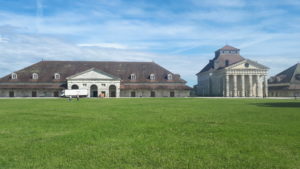
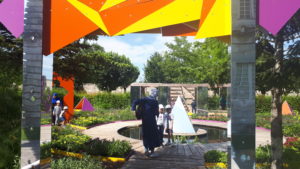
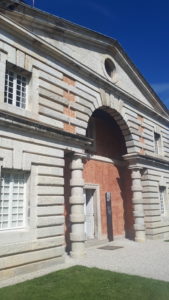
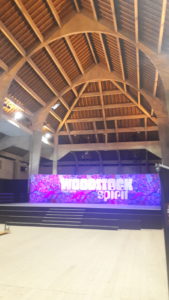 Indeed, the freemason architect Claude-Nicolas Ledoux had imagined an ideal city for the workers who worked in this first working city organized around the saltworks and the lookalike Director’s House, decorated by eight Doric columns.
Indeed, the freemason architect Claude-Nicolas Ledoux had imagined an ideal city for the workers who worked in this first working city organized around the saltworks and the lookalike Director’s House, decorated by eight Doric columns.
This incredible set is based in close proximity to the Forest of Chaux, the largest hardwood forest in France, featuring more than 22 000 hectares.
From there and now, many spots and events are offered to visitors, on this salty site:
The Saline Royale (visited by 120,000 aesthetes each year) is also a place for events with temporary exhibitions, sound and light shows, concerts (like Jordi Savall and David Gilmore).
Still there, remind on this Summer 2019, that the Saline Royale celebrates 50 years of the Woodstock Festival, a birthday celebration baptized Woodstock Spirit 1969 – 2019, the Psychedelic Exhibition, starting from June 8th until October 7th, 2019. Also arising from this same topic, you may discover the floral inspiration from the Woodstock, Flower Power exhibition, presented in the wide garden side, also starting from June 8th until October 20th, 2019. Last but not least, a modern section illustrated by the Woodstock Electro Festival occurring on the 16th, 17th and 18th August 2019, a musical project in partnership with the Eurockéennes Festival of Belfort.
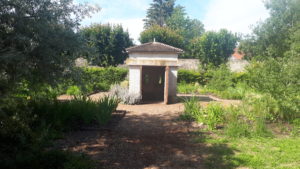
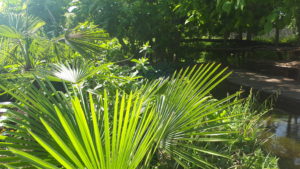
For more than 15 years, the Saline Royale made the revival of its gardens, bringing a fresh touch to this classical site. Thanks to the Festival des Jardins, more than just a garden festival, it is an ambitious educational project that brings together many educational institutions, gathering nearly 600 students from France, Belgium and Switzerland, all are federated around a common project: to refresh 12 gardens each year.
It is a large multidisciplinary team composed of students, teachers, landscapers, artists and gardeners, who work every year to design and implement this project, with much of experimentation and savoir-faire sharing!
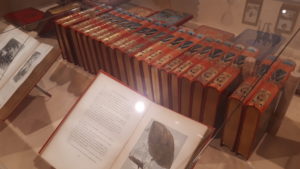
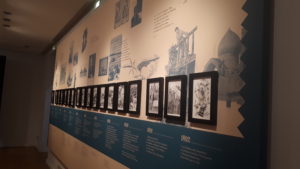
Regarding the 2019’s season, don’t miss the Jules Vernes World Exhibition, spread from May 18th to December 31th, 2019, retraces the life and publications of this famous novelist from Nantes. This event also evokes its epoch, shaken by many political events like the Revolution of February 1848. However, the beginning of the 19th century was also the period of great discoveries and many scientific journeys through the world who fed his imagination. The Industrial Revolution made the machines more and more present in daily life, exerted as well an important influence on his work.
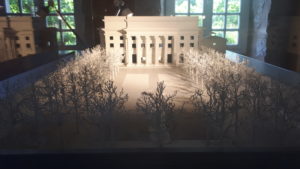
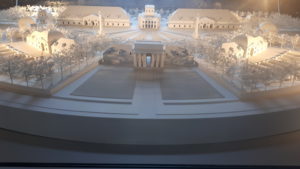
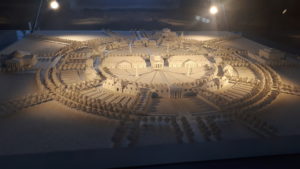
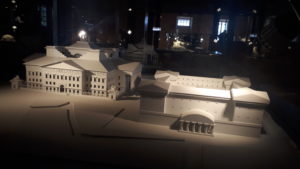
The Ledoux Museum introduces more than 50 models for the only Museum in Europe devoted to an architect, Currently, the visitors have then the choice to visit between many other cultural spaces, like connected to the prominent thematics about Salt, like the Memories of the Place, this incredible collection presents the evolution of the Saline Royale from 1895 to the present days. In another hand, the Salt Stories evoke the colors, landscapes, techniques, values, trade and uses of salt, since this site is based on a saline, classified in the UNESCO’s World Heritage List. In addition, you may eat there and even sleep in the Hotel located in the historic site, whose rooms were renovated by another architect Jean-Michel Wilmotte.
Bourgogne-Franche-Comté is also a great spot for nature enthusiasts!

Indeed, for any hiker, the Source du Lison is a notable natural site, first ever classified in France, is a must see in your stay in Doubs! This water source is the starting point of the homonym Lison river, which would continue its path during 25 kilometers, before reaching the Loue Valley. Fueled by the waters of the limestone plateau that dominates it and by numerous fissures that have dug underground galleries, typical of the karstic relief, so typical of the Jura. Nevertheless, this waterfall, which springs from a visitable cavern, never stops floating. You may admire other sources in this wild region, on the very well documented website of the Montagnes du Jura.
 Then not so far, the Via Ferrata, of the Échelles de la Mort (Scales of Death). You have to know that this path, located at the swiss border, was a high place for contraband between those two countries! Isolated in the upper valley of the Doubs or also called Death Valley, this testifies to the fear, once aroused by those places populated by legends, where many fatal accidents occurred at the occasion of the bricotte. This activity was back then a widespread practice, especially at the Franco-Swiss border in the 18th and 19th centuries (photo credits: Pays Horloger). Indeed, smuggling was indeed a lucrative activity. In this impressive site, you could still climb the ladders that allowed smugglers to transport various goods (flour, sugar, coffee, tobacco, etc.) on the backs of men by thwarting the surveillance of gabelous (customs officers).
Then not so far, the Via Ferrata, of the Échelles de la Mort (Scales of Death). You have to know that this path, located at the swiss border, was a high place for contraband between those two countries! Isolated in the upper valley of the Doubs or also called Death Valley, this testifies to the fear, once aroused by those places populated by legends, where many fatal accidents occurred at the occasion of the bricotte. This activity was back then a widespread practice, especially at the Franco-Swiss border in the 18th and 19th centuries (photo credits: Pays Horloger). Indeed, smuggling was indeed a lucrative activity. In this impressive site, you could still climb the ladders that allowed smugglers to transport various goods (flour, sugar, coffee, tobacco, etc.) on the backs of men by thwarting the surveillance of gabelous (customs officers).
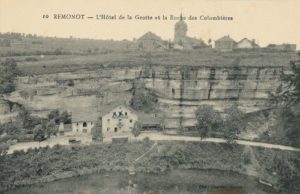 Passing through a herd of cows and you could eventually reach the Remonot Chapel and grotto… Mentioned as early as the 12th century, but it has been used since the 18th century by hermits, who evangelized the region of Haut-Doubs, also named Pays Horloger. After being a hermitage, it was converted into a chapel, from the 17th century. After 1832, the starting of the construction of the church, that was consecrated in 1863. This bucolic site even features holy water, in which flows the secular source of Gesambrune. This cavity extends over 30m long, 12m wide and 4m high.
Passing through a herd of cows and you could eventually reach the Remonot Chapel and grotto… Mentioned as early as the 12th century, but it has been used since the 18th century by hermits, who evangelized the region of Haut-Doubs, also named Pays Horloger. After being a hermitage, it was converted into a chapel, from the 17th century. After 1832, the starting of the construction of the church, that was consecrated in 1863. This bucolic site even features holy water, in which flows the secular source of Gesambrune. This cavity extends over 30m long, 12m wide and 4m high.
 Surmounted by a pretty cloche dressed in copper which has a carillon of 20 bells, this cave-chapel was certainly dedicated to the prayer since the 7th century.
Surmounted by a pretty cloche dressed in copper which has a carillon of 20 bells, this cave-chapel was certainly dedicated to the prayer since the 7th century.
Consecrated in 1863, it houses the statue of Notre-Dame de Pitié (15th century). Many visitors often come to gather in this place charged with much of local History. Three pilgrimages gather hundreds of faithful: the Pentecost Monday, August 15th and the third Sunday of September. Listed as a Historical Monument since 2009, the cave is open all year (photo credits: La Croix).
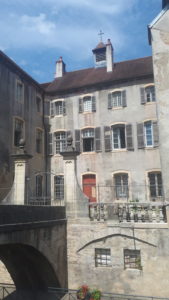
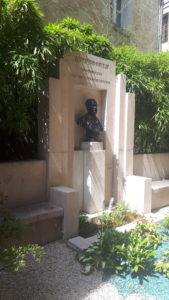 Not so far, why wouldn’t you visit Dole, a water city of Jura?
Not so far, why wouldn’t you visit Dole, a water city of Jura?
You have to know that it’s the hometown of the famous scientist Louis Pasteur, whose father was a tanner. This is not a surprise since this city was strongly influenced by tanners, in every corner of the city!
This was made possible thanks to the omnipresence of the water, which would for example be found in the Leprosy Fountain, although there was none at Dole.
A city at the crossroads of the Rhine and Rhone rivers, and also a passage city since the Greco-Roman era.
If you are a boater, the Dole canals, also famous as the “Little Venice of the Jura”, has everything you need to welcome you above its waters. During your visit in Dole, you may dock at the Port of Prélot, on a parallel side to the Tanneurs Canal, in one of the most charming areas of the city center.
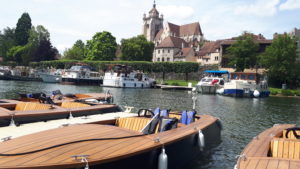
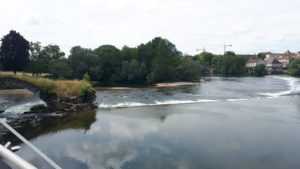
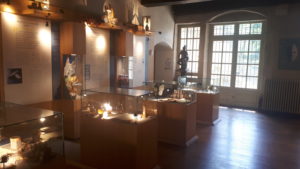
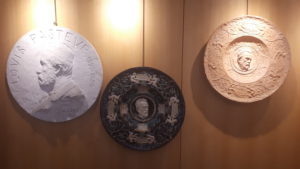
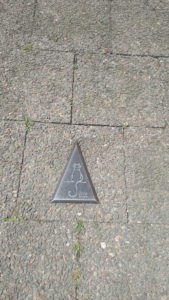
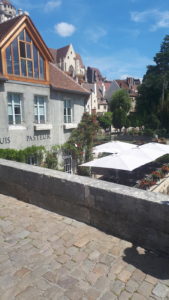
At the edge of the Canal des Tanneurs, the Maison Natale de Louis Pasteur is the house where Louis Pasteur was born and it represents the starting point of the incredible destiny of one of the most famous French scientists.
Listed as a Historic Monument, the birth House of Louis Pasteur received in 2011 the label Maisons des Illustres from the Ministry of Culture and Communication at the same time as the house of Arbois.
Through a fun and attractive implementation, this House traces his work as a scientist by exploring many fields of knowledge that Pasteur has put forward. Best known for the brilliant discovery of rabies vaccine, the scientific work of Louis Pasteur extends to many areas, from the study of crystals until the diseases of the silkworm, including the study fermentations of wine and beer. From objects and personal documents, the birthplace shows how Louis Pasteur, a Dole‘s child, became an international scientist.
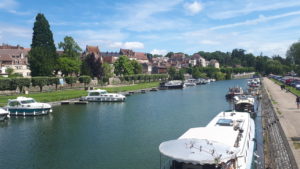
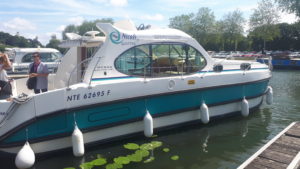
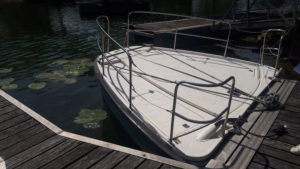

It is a city that can be crossed thanks to one of the many offers of navigation, whether habitable or not. For example, pleasure boats of the Nicols brand are for rent for a family ride on the canals. They have complete comfort and do not require a navigation license. In addition, they even have the option of connecting a small pool to port.

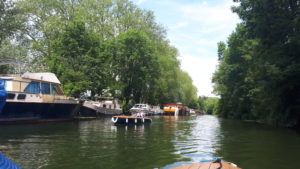
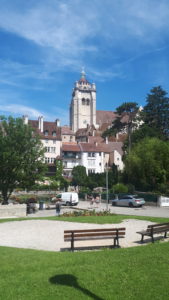 For just a ride with family or friends, in the afternoon, the choice could be focused on these wooden electric gondolas, this solution is ideal to admire the city differently.
For just a ride with family or friends, in the afternoon, the choice could be focused on these wooden electric gondolas, this solution is ideal to admire the city differently.
A city whose heritage has been enriched as and when, thanks to the construction of a collegiate church
Louis XIV again with the help of Vauban who ordered the destruction of all the ramparts of the city of which there remains only a bastion.
To stop for some refreshment, dare to cross the Doubs and join this appreciated hospitality establishment Au Moulin des Écorces, right on the river, to savor the local specialties, like this Franche-Comté escalope or those fresh tartares! (photo credits: AMDE).


The Bourgogne Franche-Comte region reserves you great gastronomy promises!
Those are promoted by GPPR Gastronomy Committee through the culinary fairs and experiences, an association intervention available on demand.
 Delicatessen, especially smoked, is a Burgundy classic. For authentic sensations, the specialties from the Tuyé of the Papy Gaby would satisfy you in the ground of this nearly independant territory!
Delicatessen, especially smoked, is a Burgundy classic. For authentic sensations, the specialties from the Tuyé of the Papy Gaby would satisfy you in the ground of this nearly independant territory!
Built in the 70s by Gabriel Marguet, butcher in Villers-le-Lac, it has been operational for more than forty years and proposes a traditional know-how that exists since centuries. Indeed, until the middle of the 20th century, in Franche-Comté, pork and beef were regularly smoked for preservation. Each farm thus had a tuyé in its center, and it was located in private houses, in some of those large chimneys, nicknamed Gaby. Those elements eventually found refuge for those specific pieces but central heating changed the situation and, step by step, the activities of the tuyés were extinguished.
Then came the idea to Gabriel Marguet to build his own smoking basement, in gigantic dimensions. This is so strong that you smell the grease, only after staying a couple of minutes there. Therefore, an installation enough able to ensure the continuation of this ageless tradition, for the pleasure of all the gourmets of the World.


At 900m altitude, on the edge of the softwoods and a splendid panorama, the Tuyé du Papy Gaby took root in the Republic of Saugeais, a mysterious unofficial territory created in 1947 which, without apparent borders, claims yet its presidency (with its own president) and its ministers, its hymn and his currency, its customs officer, even its laissez-passer and his ceremonies. If you obtain your visa, you would appreciate those traditional methods, being preserved, thanks to this craft business remained as a family affair. Le Tuyé de Papy Gaby is now headed by Jean-François Nicolet. The visit and the tasting of their products are free and also available online.

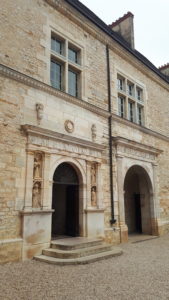
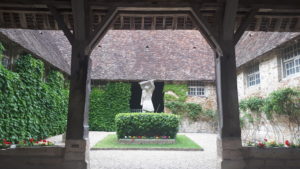 A detour into the vineyards that extend as far as the eye can see on the hills, with one of the best wines of the World in gestation.
A detour into the vineyards that extend as far as the eye can see on the hills, with one of the best wines of the World in gestation.
There are countless prestige cuvées in Burgundy, Romanée-Conti hills, Nuits-Saint-Georges, Vosne Romanée, Puligny Montrachet, Meursault and many more…
They are called Climats (Climates) and they are registered on the UNESCO list.
A visit to the Clos Vougeot fully illustrates the wine imprint on this territory.
Standing in the heart of Burgundy‘s vineyards, it was originally a wine farm, built in the 12th century by monks from the nearby Abbey of Citeaux. In the 16th century, a Renaissance styled Chateau was added to the existing buildings.

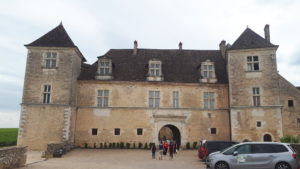
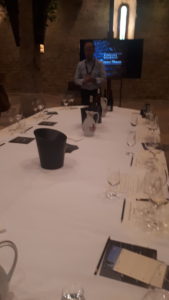
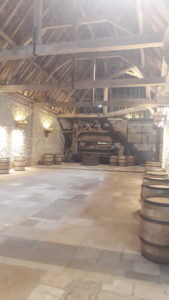 If wine would be a religion, then the Château du Clos de Vougeot would be your cathedral.
If wine would be a religion, then the Château du Clos de Vougeot would be your cathedral.
With its medieval vat-house and presses, Cistercian cellar and original kitchens, it forms a unique architectural whole, attracting history lovers, architecture lovers or wine lovers.
The Château du Clos Vougeot is also widely recognized for its famous receptions. It is renowed as one of the best “table d’hôte” of France, thanks to the skills of the Chef Olivier Walch.
Even though the Château du Clos de Vougeot does not produce wine anymore, it stays the symbol of a millenary of Burgundy’s History.
The Confrérie des Chevaliers du Tastevin (Brotherhood of the Tastevin Knights) acquired the Castle in 1945, and started to restore it, turning it into the seat of the Order.
This folk but gourmet association has been organizing a tastevinage session, twice a year, in the cellar of Château du Clos de Vougeot, since 1950, with a jury of nearly 250 international elite tasters, renowned winemakers, wine merchants, oenologists, members of the repression of frauds, restaurateurs, enlightened amateurs, and high dignitaries. During those ceremonies are selected anonymously the best grands crus and first vintages of Burgundy, among nearly 700 bottles of red, white and crémant of Burgundy proposed by about 180 winegrowers, breeders and owners.
Nearly 250 winners are thanked, about one-third of the candidates, would usually be stamped with the seal of Tastevin (the coat of arms of the Tastevin Knights Brotherhood). For the vine growers concerned, this seal is a reward, distinguishing their wines as high quality and perfectly conforming to the characteristics of their appellations and their vintage.
Adress : Rue de la Montagne, 21640 Vougeot – Tel : 00 33 (0)3 80 62 86 09
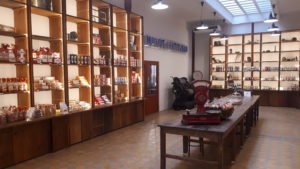

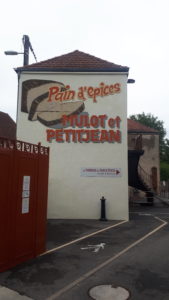 A great local Dijon specialty, gingerbread …
A great local Dijon specialty, gingerbread …
Gingerbread has its temple in Dijon, thanks to the producer Mulot & Petitjean.
You could visit their factory, within an intuitive area of nearly 450 m²… There, discover the history of the Mulot & Petitjean House and all the ingredients needed to make the ancestral Dijon gingerbread.
All the steps of the gingerbread production are presented through the exhibition of the company’s collection of machines and tools and the testimonials of employees on giant screens.
At the end of the tour, you’re invited to discover different specialties during a tasting in the shop.
For your information, the original recipe is a gingerbread with wheat flour (wheat) and flavored with green anise, contrary to recipes of Alsace much more spices.
This makes it a more elastic and more neutral gingerbread, which goes well with saltier toppings such as foie gras.
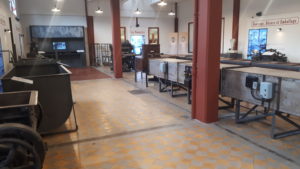 La Fabrique designs 500 tons of gingerbread a year, which requires 250 tons of flour stored in a sillot outside the building.
La Fabrique designs 500 tons of gingerbread a year, which requires 250 tons of flour stored in a sillot outside the building.
The reconstitution of the production room is animated by testimonies of the employees whereas the extras in the frames of the reconstitution of the office of origin are actors.
In the manufacture of dough, there are two stages.
First the mother paste composed of honey, sugar and flour, which then rests three weeks. A time of rest necessary for the gingerbread raises in a very homogeneous way.
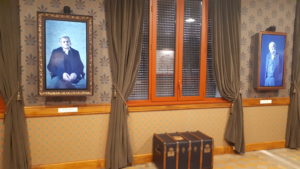 The second step is the pointed dough (etymologically acting with the arm) consisting of egg yolk, baking powder and spices or aromas. Since there must be less than 3% fat, gingerbread can be kept for several months.
The second step is the pointed dough (etymologically acting with the arm) consisting of egg yolk, baking powder and spices or aromas. Since there must be less than 3% fat, gingerbread can be kept for several months.
Finally there are two methods of manufacture, a traditional method that continues with 50 tons per year, allowing the design of more creative shapes made with the punch like small pigs, especially for markets.
In addition, the industrial method installed more recently in 2003. This allows to expand the production and range of perfume, whose best-seller is the nonette.
New recipes appear regularly including pure honey gingerbread whose sugar is replaced by honey.
Adress : 6 Boulevard de l’Ouest, 21000 Dijon – Tel : 00 33 (0)3 80 66 30 80
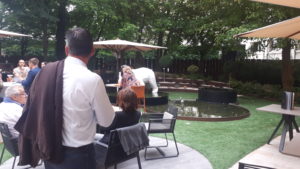
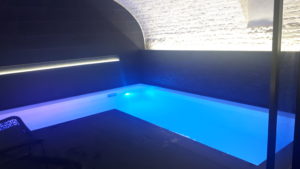
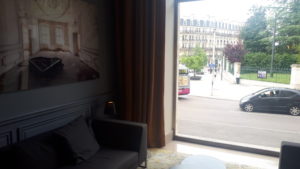
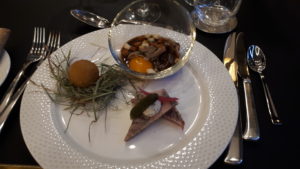
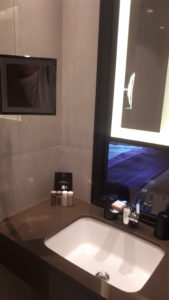
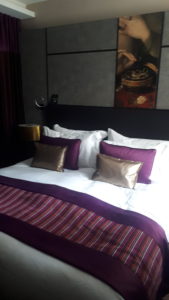 For a cozy stay in Dijon, the Grand Hotel La Cloche by M Gallery, also introduces you to the best of the Burgundy culinary specialties, to enjoy in their garden party or their fully designed restaurant, starring Orlinski artworks.
For a cozy stay in Dijon, the Grand Hotel La Cloche by M Gallery, also introduces you to the best of the Burgundy culinary specialties, to enjoy in their garden party or their fully designed restaurant, starring Orlinski artworks.
Do not miss the SPA in the underground, including wellbeing and massage services.
Grand hôtel La Cloche – 14 Place Darcy 21000 Dijon – Tel : 00 33 (0)3 80 30 12 32
